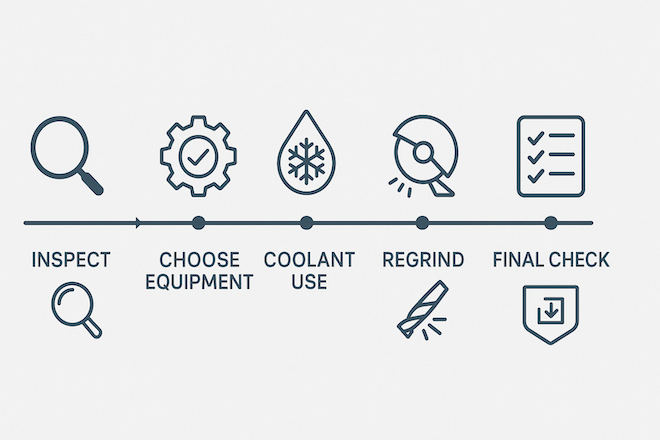Las herramientas de corte de carburo de tungsteno son conocidas por su dureza y larga vida útil. Sin embargo, tras un uso intensivo, incluso las mejores herramientas de carburo se desgastan o pierden filo. En lugar de desecharlas, muchas herramientas se pueden afilar y reacondicionar para recuperar su rendimiento de corte.
En esta guía, explicaremos en un inglés sencillo cómo afilar y reacondicionar herramientas de corte de carburo de tungsteno, paso a paso. También aprenderá a identificar cuándo es necesario afilar y a elegir el método y el equipo adecuados.
¿Por qué reacondicionar herramientas de carburo de tungsteno?
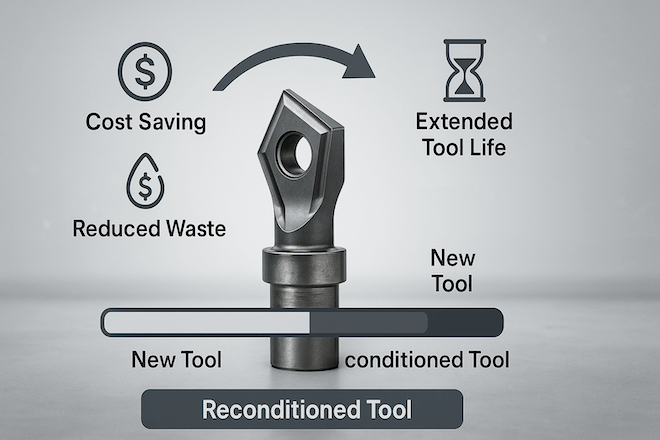
Las herramientas de carburo de tungsteno son más caras que las de acero convencionales. Por eso, afilarlas y reutilizarlas es una buena idea. El reacondicionamiento le ayuda a:
Ahorre dinero en reemplazos
Mantener la geometría y precisión de la herramienta
Reducir el tiempo de inactividad en la producción
Reducir los residuos y apoyar la sostenibilidad
Retop ofrece una gama completa de herramientas de corte de carburo con servicios de reafilado y reafilado. Puede explorar más aquí: Herramientas de corte de carburo de tungsteno.
Señales comunes de que su herramienta de carburo necesita afilarse
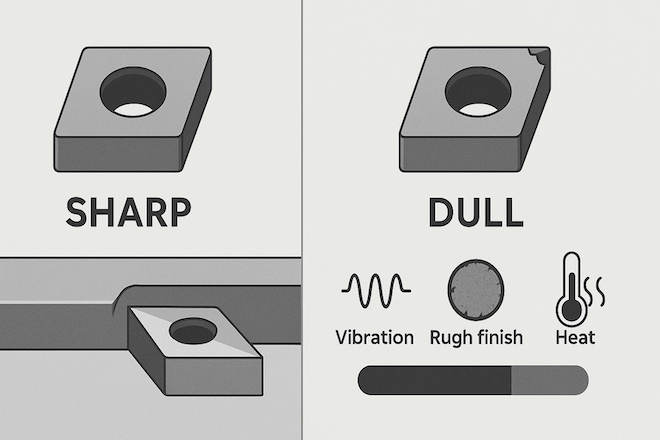
¿No sabes cuándo reafilar? Presta atención a estas señales:
Filo de corte sin filo
Vibración o traqueteo durante el mecanizado
Mal acabado superficial en la pieza de trabajo
Mayor fuerza de corte o presión de la herramienta
Desgaste visible en los flancos o esquinas de la herramienta
El uso de una herramienta desafilada durante demasiado tiempo puede provocar sobrecalentamiento, rotura de la herramienta o defectos en las piezas.
Tipos de herramientas de carburo de tungsteno que se pueden reacondicionar
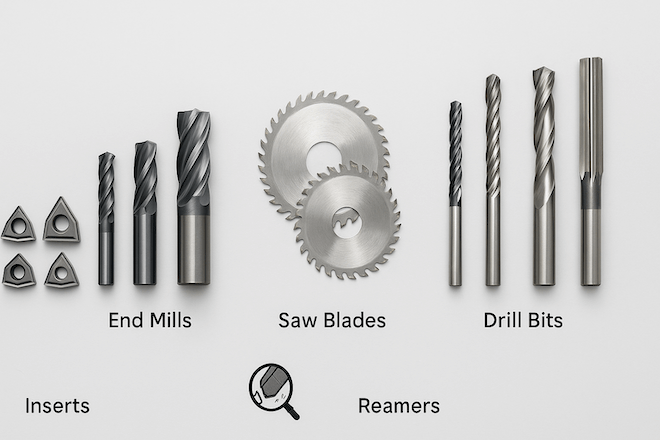
Hay muchos tipos de herramientas de carburo que se pueden reacondicionar si no están demasiado astilladas:
Herramientas de carburo personalizadas
Explora nuestro catálogo completo aquí:
👉 Herramientas de corte de carburo personalizadas
Paso a paso: Cómo afilar herramientas de corte de carburo de tungsteno
1. Inspeccione la herramienta cuidadosamente
Antes de afilar, inspeccione la herramienta bajo una luz brillante o con una lupa. Compruebe lo siguiente:
Marcas de desgaste
Grietas
Papas fritas
bordes rotos
Las herramientas muy dañadas pueden no merecer la pena afilarlas.
2. Elija el equipo de afilado adecuado
Para afilar carburo de tungsteno se requieren abrasivos de diamante o muelas de CBN. Las muelas de amolar convencionales no sirven.
Las máquinas y herramientas comunes incluyen:
Afiladora de herramientas CNC
Rectificadora de superficies de precisión
Afiladora universal de herramientas y cuchillas
Muelas de diamante (de resina o aglomerante vitrificado)
Para herramientas complejas o revestidas, se recomienda un servicio profesional.
3. Use refrigerante o lubricación
El rectificado genera calor, lo que puede dañar el carburo. Utilice siempre:
Refrigerante soluble en agua o
refrigerante a base de aceite
Esto ayuda a reducir las grietas térmicas y preserva la dureza de la herramienta.
4. Rectificar el filo
Respete la geometría original al reafilar. Las piezas clave para reafilar incluyen:
Ángulos de espacio libre primarios y secundarios
Ángulos de inclinación
Bordes de flauta (para taladros y fresas)
Radio de esquina o chaflán
Utilice ruedas de diamante de grano fino para obtener un borde suave y afilado.
5. Limpiar e inspeccionar nuevamente
Después del afilado:
Limpiar la herramienta
Compruebe si hay grietas en la superficie
Pruebe el rendimiento del corte si es posible
Si tiene un recubrimiento (como TiAlN o TiCN), es posible que deba volver a recubrir la herramienta después de afilarla.
Obtenga más información sobre los recubrimientos aquí:
👉 Guía de recubrimiento de carburo de tungsteno
Afilado DIY vs. Afilado profesional: ¿cuál es mejor?
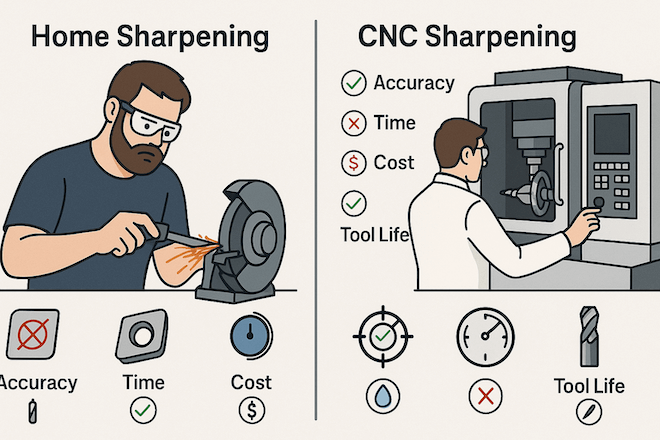
| Factor | Afilado DIY | Servicio profesional |
|---|---|---|
| Costo | Más bajo si hay pocas herramientas | Más rentable para lotes |
| Precisión | Depende de la habilidad y el equipo. | Alta precisión |
| Tiempo | Pérdida de tiempo | Entrega más rápida |
| Manejo de recubrimientos | No es posible hacerlo internamente | Puede quitar y volver a aplicar recubrimientos. |
| Vida útil de la herramienta | Puede acortarse con una técnica deficiente | Vida útil prolongada de la herramienta garantizada |
Consejo: Para herramientas de alta precisión como insertos de carburo y fresas de extremoEs más seguro utilizar un servicio de rectificado profesional como Retocar.
¿Cuántas veces se puede reafilar una herramienta de carburo?
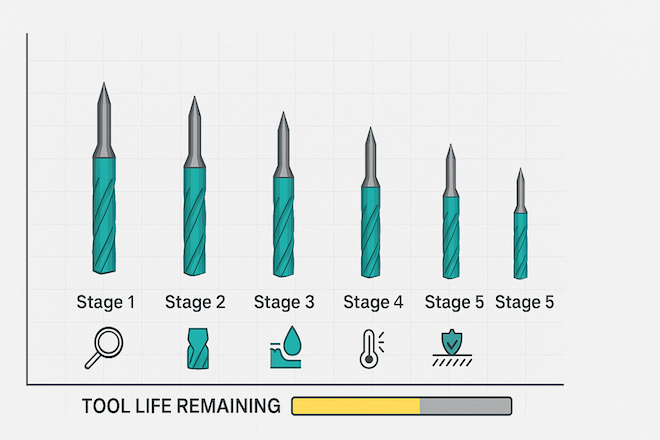
Esto depende de:
Tipo de herramienta
Tamaño inicial
Solicitud
Calidad de reafilado
Normalmente, las herramientas de carburo se pueden afilar de 3 a 5 veces antes de necesitar un reemplazo completo.
Las herramientas de carburo personalizadas con filos más gruesos pueden permitir más reafilados. Consulte nuestra guía aquí:
👉 Por qué las herramientas de corte de carburo de tungsteno tienen una resistencia al desgaste superior
Cómo maximizar la vida útil de la herramienta entre afilados

Utilice estos consejos para prolongar la vida útil de la herramienta y retrasar el afilado:
Elige lo correcto grado de carburo para tu material
Utilice velocidades de corte y avances adecuados
Aplicar refrigerante durante el funcionamiento
Evite cargas de choque o cortes interrumpidos
Guarde las herramientas en cajas secas y acolchadas.
Utilice herramientas de carburo recubiertas para una mayor vida útil.
Más consejos aquí:
👉 Consejos de mantenimiento para prolongar la vida útil de sus herramientas de corte de carburo de tungsteno
¿Es posible reafilar las herramientas recubiertas?

Sí, pero primero hay que retirar el recubrimiento. La mayoría de los recubrimientos se eliminan con:
Decapado químico
Grabado de plasma
Después de afilarla, la herramienta se puede recubrir nuevamente para una protección continua.
Servicios de reacondicionamiento confiables de Retop
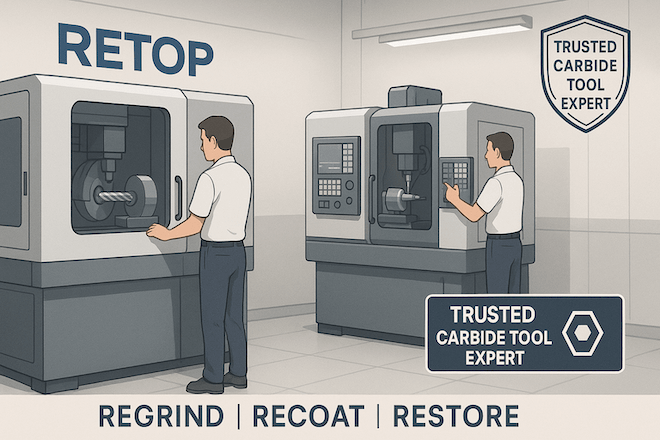
En Retop, no solo suministramos herramientas de carburo de tungsteno de alto rendimiento, sino que también ofrecemos:
Inspección y evaluación de herramientas
Afilado y reafilado de precisión
Servicio de repintado de herramientas
Reparación o remodelación de herramientas personalizadas
Nuestro avanzado equipo de rectificado CNC y nuestro estricto control de calidad garantizan que sus herramientas reacondicionadas funcionen como nuevas.
Conclusión
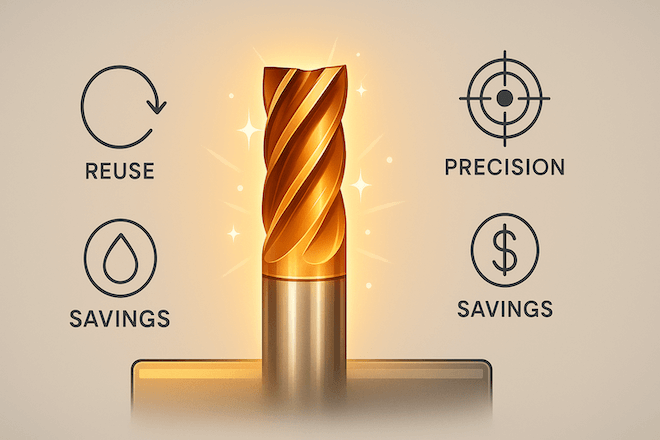
Afilar y reacondicionar herramientas de carburo de tungsteno es una forma inteligente de prolongar su vida útil y ahorrar dinero. Con el equipo y la técnica adecuados, o eligiendo un proveedor de confianza como Retop, puede revitalizar sus herramientas desafiladas y mantener sus operaciones funcionando eficientemente.
Si no está seguro de cómo reafilar o necesita ayuda, contáctenos. Estamos aquí para ayudarle a mantener y optimizar sus herramientas de carburo.

